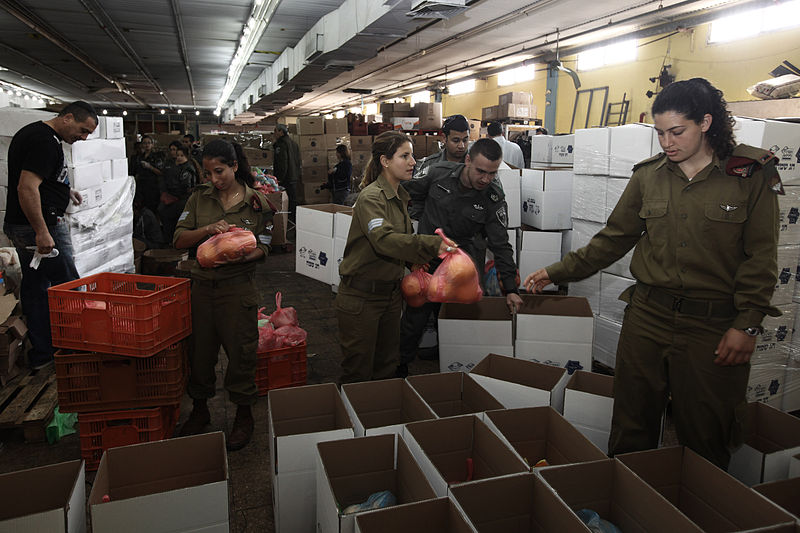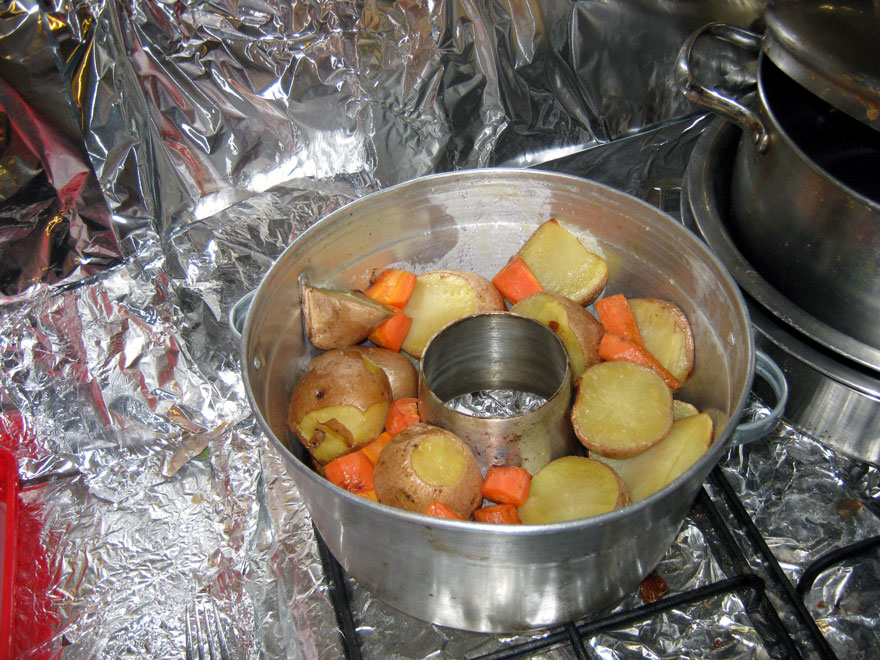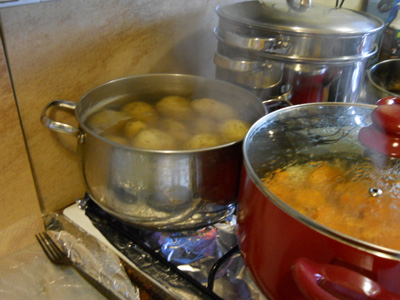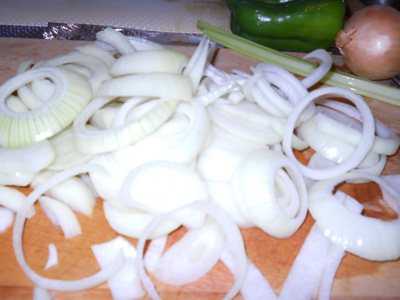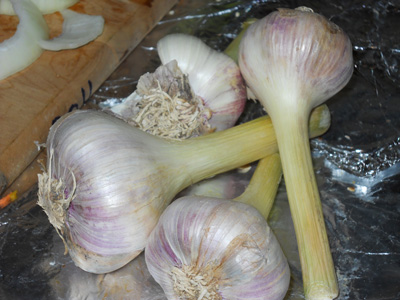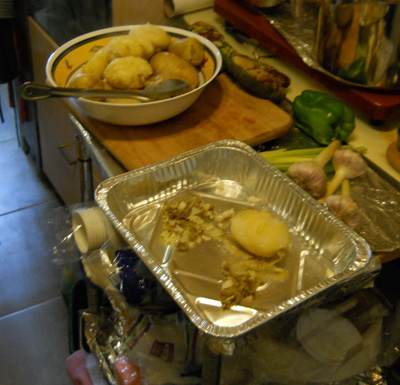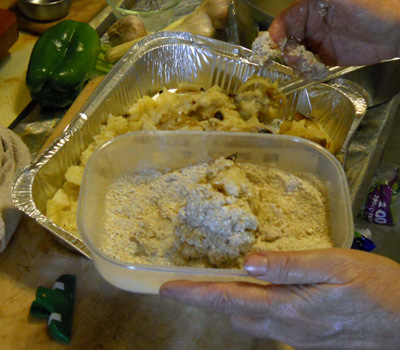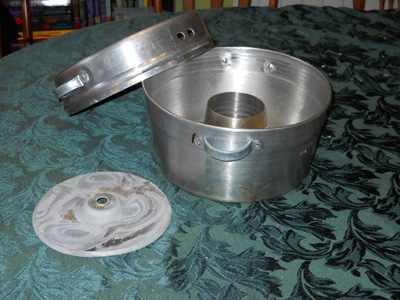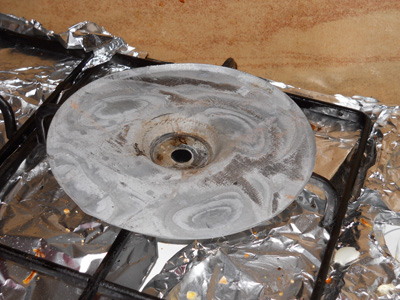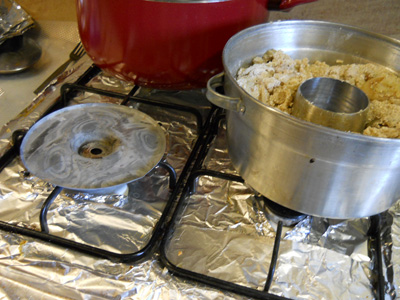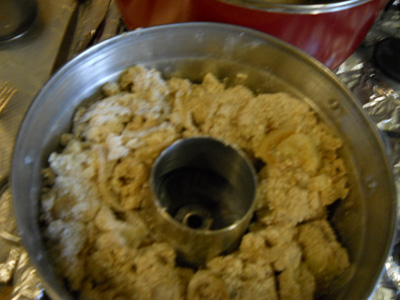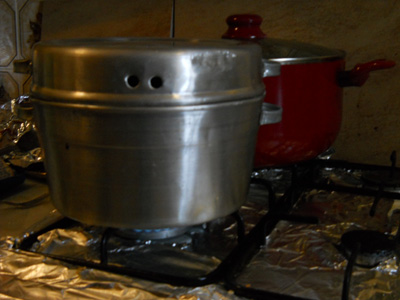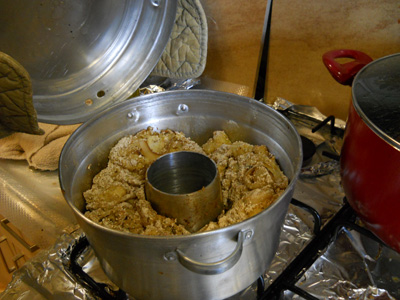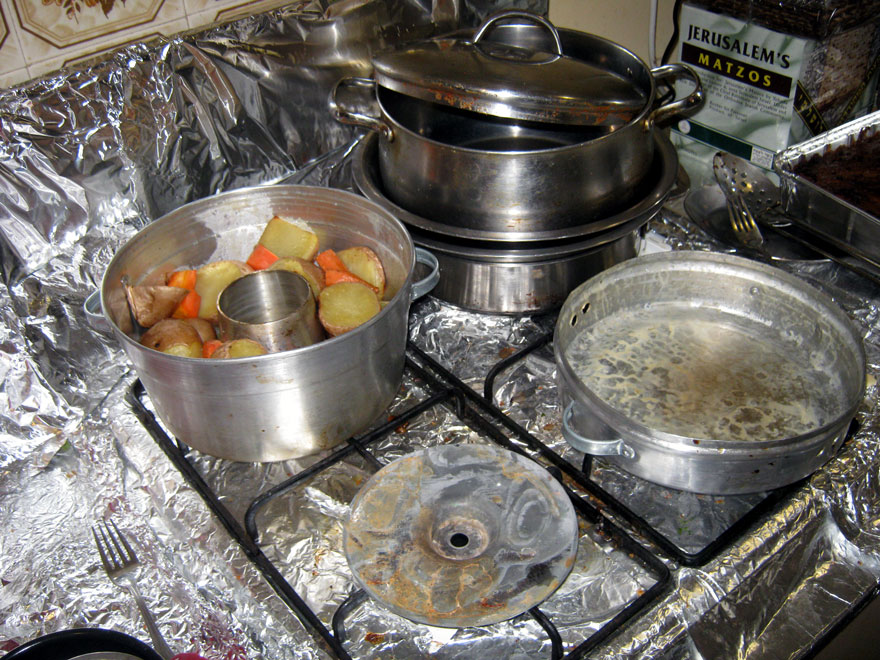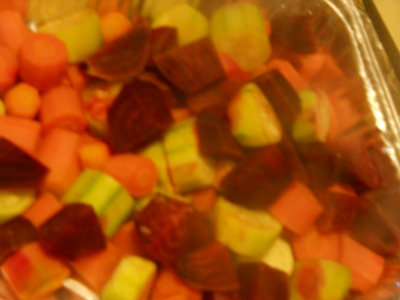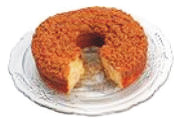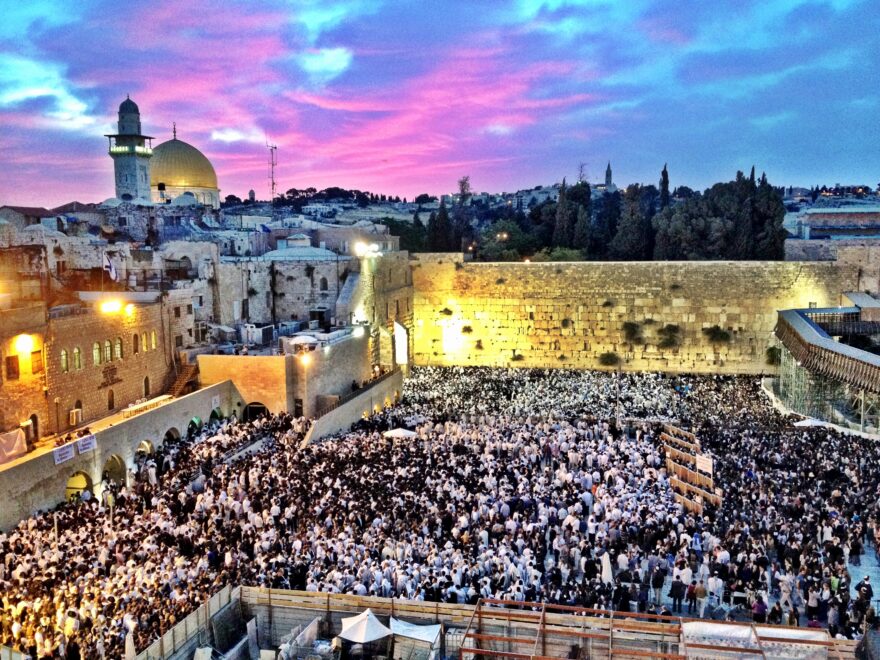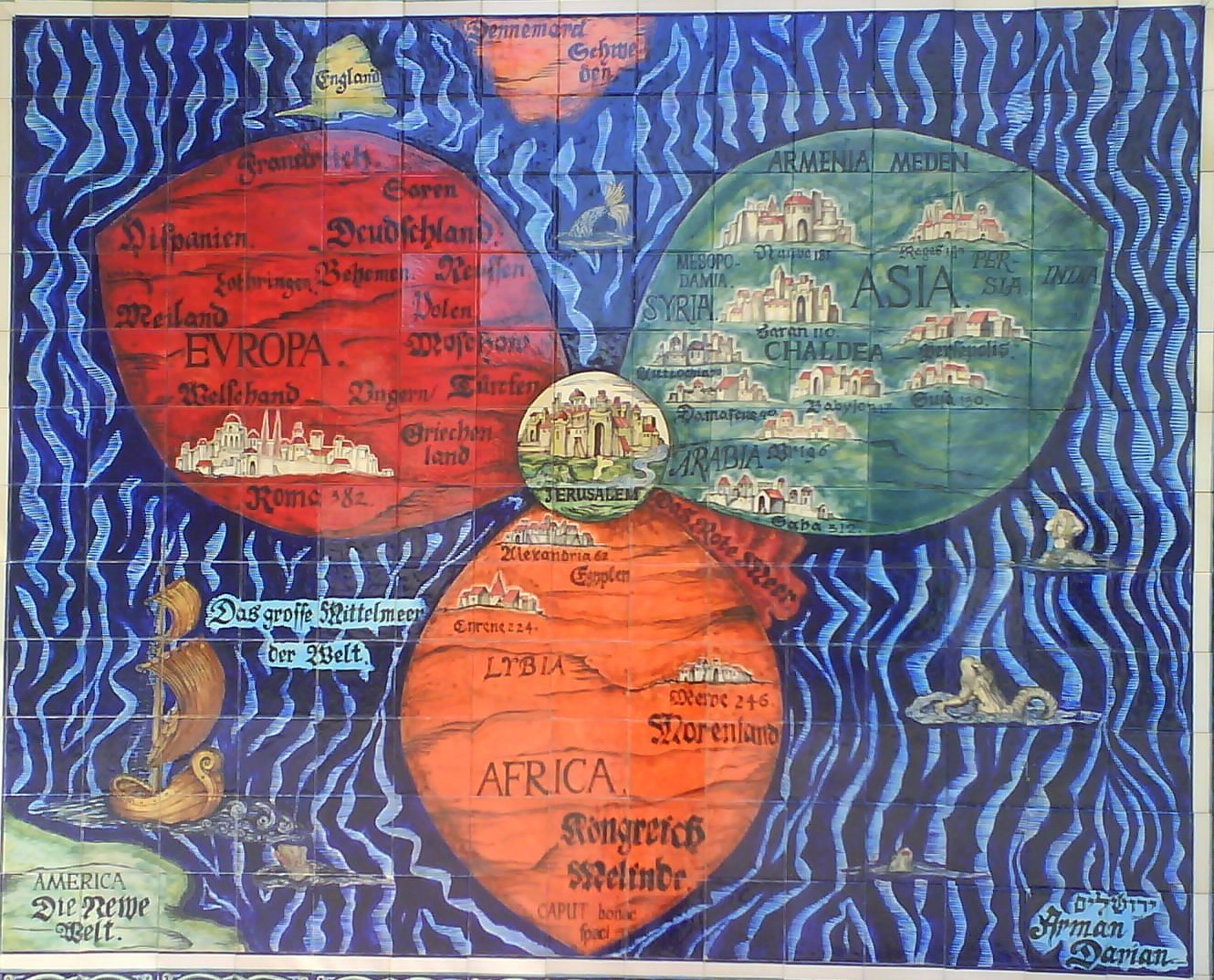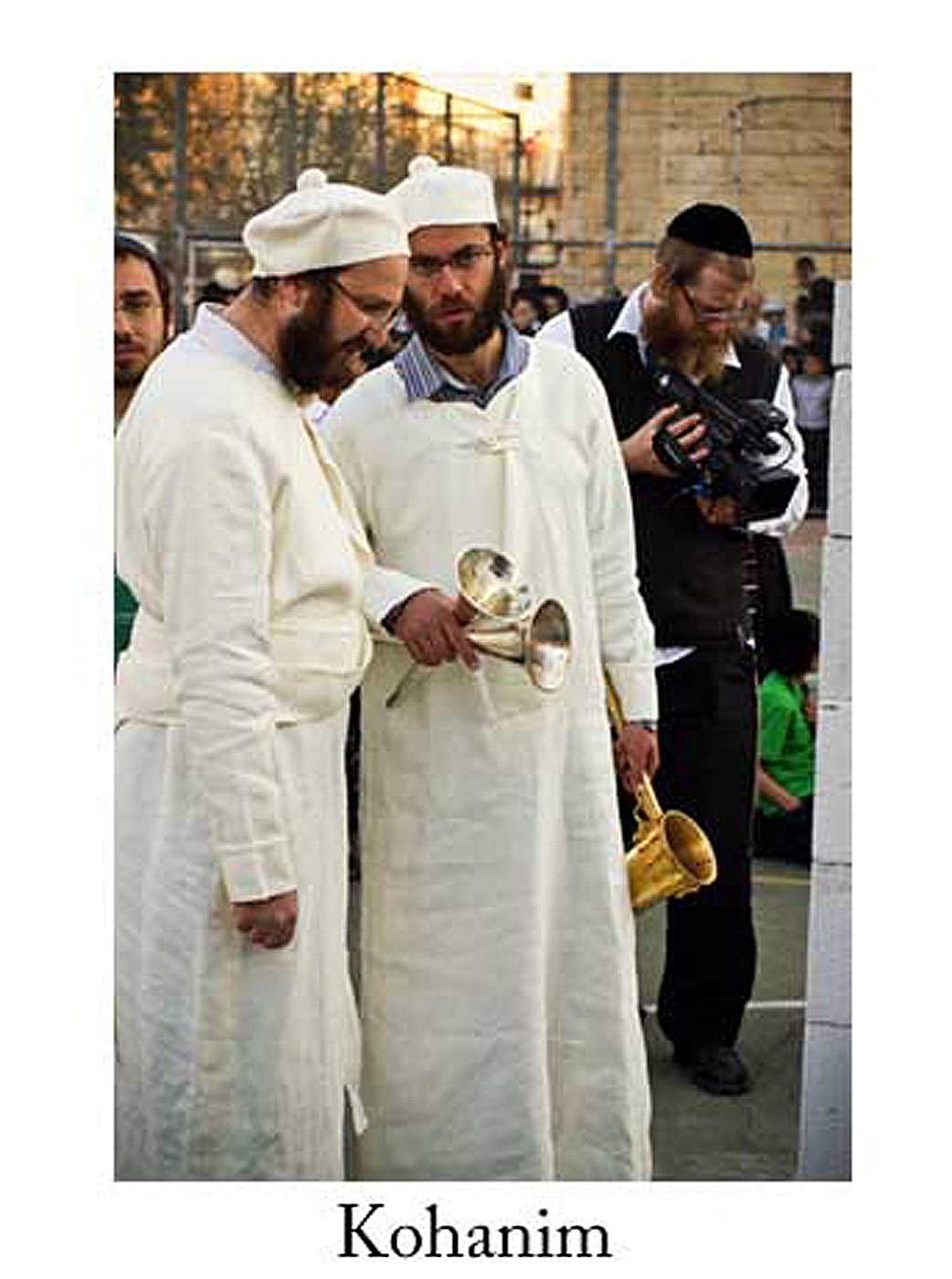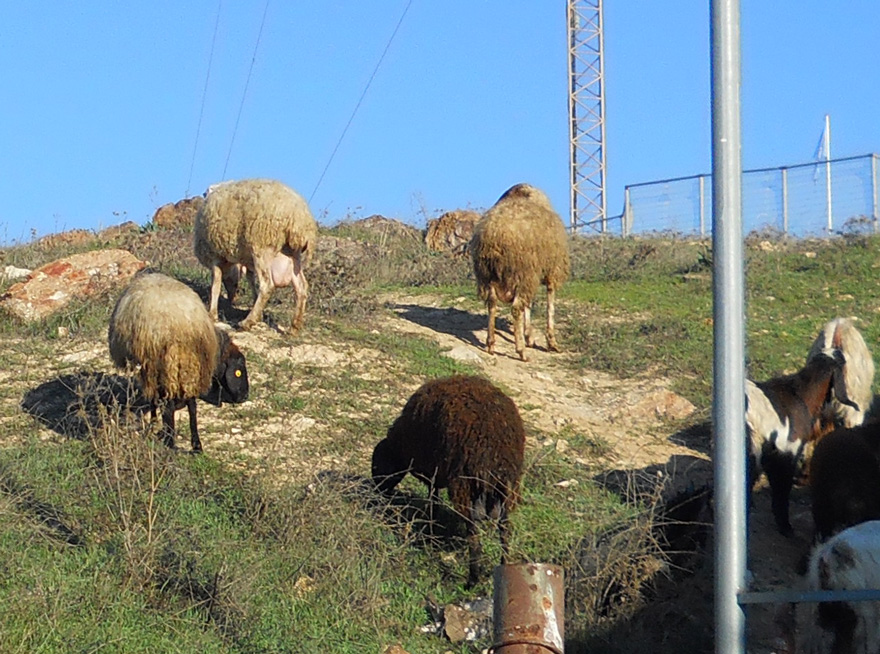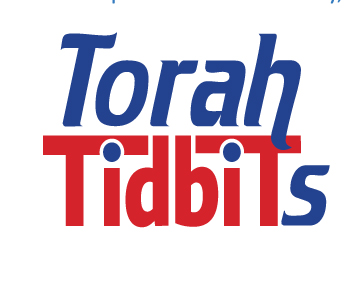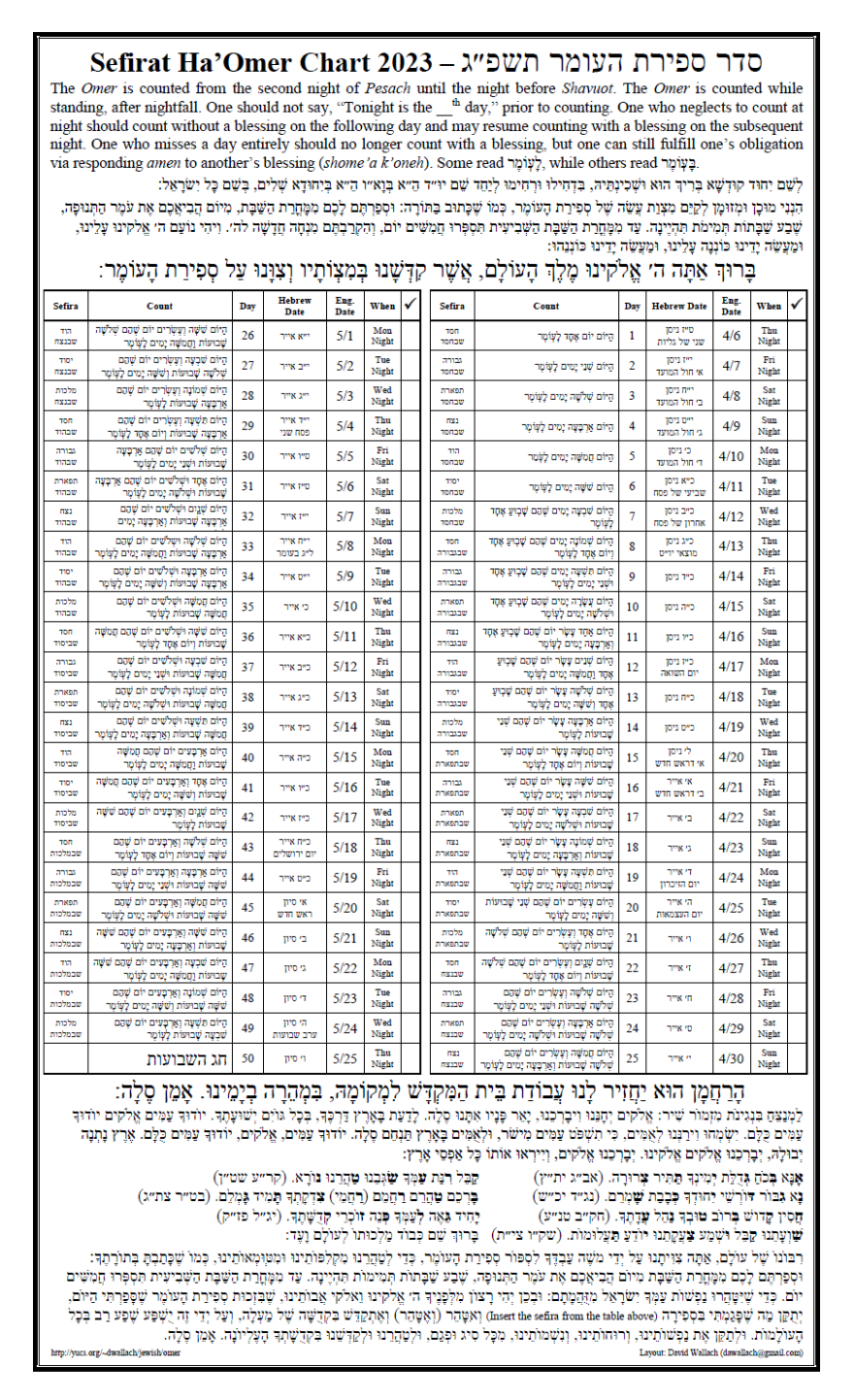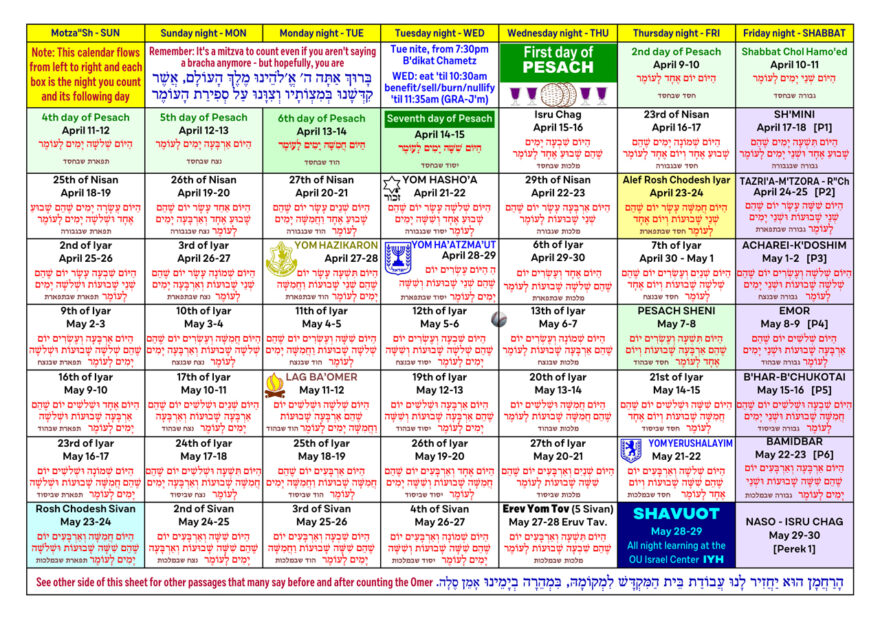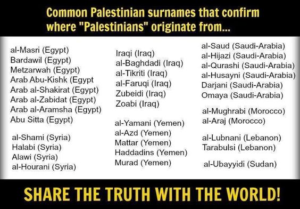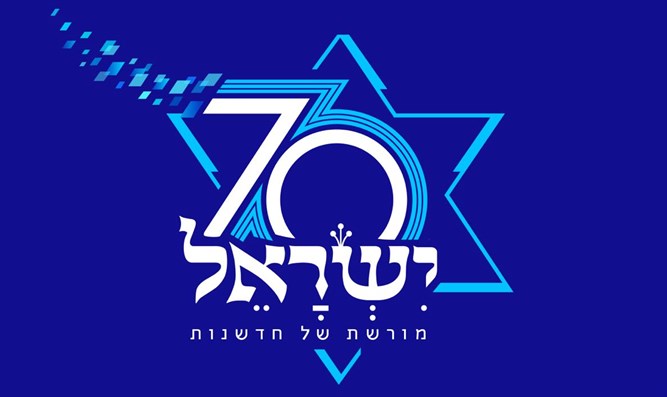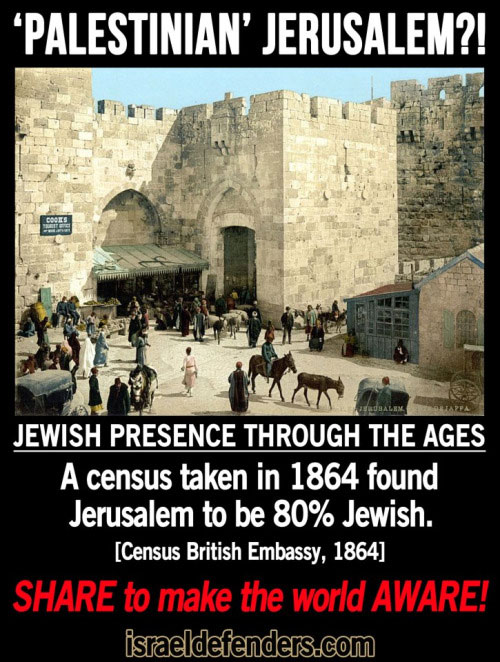Pesach (Passover) seder is in a few days.
What does Next Year in Jerusalem mean to you?If you are not living in Israel, you need to move to Israel NOW!! Pesach Shopping  You know exactly what you can buy in every Store. and in many store everything is without Kitniyot. – Leavened foods concealed behind plastic at Jerusalem supermarket during Passover The White plastic film covering the shelves of Chametz is what our local store dose, but a lot of stores remove all Chametz completely weeks before Pesach. All the Dairy is Kosher for Pesach at least a week before Pesach. I personal like Rami Levi Mehadrin in Givat Shaul, Jerusalem. The products have no Kitniyot.
|
|
| A Country of Chessid (Kindness) | |
Sephardic Chief Rabbi Yosef “Today thank God most of the nation of Israel is here in the land of Israel.”Be part of the Majority. Make Aliyah Today!It’s time to come home! Nefesh B’Nefesh: Live the Dream 1-866-4-ALIYAH UK 0800 075 7200 Come home to the Land of Emuna Nefesh B’Nefesh: Live the Dream US & CAN 1-866-4-ALIYAH | UK 020-8150-6690 or 0800-085-2105 | Israel 02-659-5800 https://www.nbn.org.il/ info@nbn.org.il Be sure to try out a Wonder Pot-סיר פלא. It is great when you do not have a Kosher for Pesach large oven. You can use it like an oven on the stovetop.Wonder Pot (Hebrew: סיר פלא, seer peh-leh) is an Israeli invention for baking on top of a gas stove rather than in an oven. It consists of three parts: an aluminium pot shaped like a Bundt pan except smooth-sided rather than fluted, a hooded cover perforated with venting holes, and a thick, round, slightly domed metal disc with a center hole that is placed between the pot and the flame.A Wonder Pot can be used to bake cakes, casseroles, rice, potatoes, apples, and even meat and chicken. |
|
Pesach Wonder Pot סיר פלא Recipe – Baked Potato סיר פלא-תפוחי אדמה
You can also Cut up Potatoes, Yams, Sweet Potatoes, Carrots, Beets, or any vegetable into chunks or slices. Drizzle Olive Oil on top and Bake |
|
Pesach Wonder Pot סיר פלא Recipe – Potato Knishes |
|
|
Pesach Wonder Pot סיר פלא Recipe Potato Knishes 5 Cups mashed potatoes 3 eggs ¾ Cup matzoh meal salt and pepper to taste chopped up fresh garlic optional 2 onions olive oil to line pot Brown onions and garlic (if using) in pan. Mix everything except matzoh meal and roll into big balls and roll in matzoh meal, place in wonder baker all around, and bake for ½ hour and check and then another ½ hour til cooked, check so it doesn’t burn. Use a medium flame. Absolutely delicious. |
|
Carol Umbehocker’s Delicious Squash Kugel for PassoverBaked Squash Kugel for Passover ½ Cup chopped onions ½ Cup Matzoh meal 2 eggs 1/2 Cup of vegetable oil or 1 stick margarine (Kitniyot) divided in half 1 teaspoon Salt or to taste 1 Tablespoon. sugar ½ teaspoon pepper to taste Wash and cut up the squash. Boil until tender. Drain thoroughly, then mash. Add all ingredients to squash and ½ stick of melted margarine. Melt remaining margarine. Pour mixture into baking dish then spread melted margarine over top and sprinkle with matzo meal. Bake at 350 degrees F or 180 degrees C for 1 hour or until top is brown. |
|
Try fresh steamed vegetables as a side dish |
|
Pesach Wonder Baker Pot סיר פלא Recipe-Wonder Pot Classic Cake By: Yaara Holtzmanhttp://www.kan-naim.co.il/artical.asp?id=4462 |
|
“מתכוני פסח מיוחדים ל”סיר פלאזוכרים את ’סיר-הפלא יש לו תחייה מחודשת מכינים בו עוגות, שאגב לא מביישות אף אופה מקצועית, על… הגאז! מאת: יערה הולצמן
עוגת ’סיר פלא’ קלאסיתהחומרים:
אופן ההכנה:מערבבים את החלמונים עם ¾ כוס סוכר ומוסיפים את קמח תפוחי האדמה, האגוזים, אבקת האפייה, השמן והקינמון. מגררים תפוח עץ או גזר ומוסיפים לתערובת. בנפרד, מקציפים את החלבונים עם ¼ כוס סוכר. מוסיפים לתערובת בתנועות קיפול. משמנים את ’סיר הפלא’ ושופכים פנימה את התערובת. סוגרים את הסיר. מחממים את טבעת המתכת המיוחדת שרוכשים עם סיר ’ואופים’ ע”ג אש בינונית – נמוכה, למשך ¾ שעה. עוגת שלוש שכבותהחומרים:
אופן ההכנה:להקציף חלבונים עם 1 כוס סוכר. בנפרד להקציף חלמונים עם ½ כוס סוכר. להוסיף לתערובת החלמונים שמן, קקאו, קמח תפוחי אדמה ויין. מחצית מקערת החלבונים המוקצפים להכניס לקערת החלמונים בתנועות עטיפה. לקצף החלבונים הנותר להוסיף את הקוקוס. לשמן את ’סיר הפלא’ ולשפוך את מחצית מתערובת החלמונים לסיר. להוסיף את קצף החלבונים והקוקוס ולשטח על גבי השכבה השנייה בעזרת כף. לשפוך את יתרת תערובת החלמונים מלמעלה. לסגור את הסיר. לחמם את טבעת המתכת המיוחדת שרוכשים עם הסיר ו’לאפות’ ע”ג אש בינונית – נמוכה, למשך ¾ שעה. * הכותבת יערה הולצמן, למדה עיצוב, ועבדה בתור ארט-דירקטורית וקופירייטרית במשרדי פרסום שונים. כיום היא עסוקה בעיקר בגידול ילדים, בישול וספונג’ה, ובין לבין היא גם “חוטאת” בכתיבה. * מובא באדיבות אתר aish של “אש התורה” שהיא רשת בינלאומית וא-פוליטית של מרכזים לחינוך יהודי. |
Special Passover Wonder Pot recipes{This is a traslation into English via Google} Remember the ‘wonder pot?’ The metal pot with a round hole, our grandmothers, used during H’tzna? Well, it has a revival! Since many families have no special oven for Passover and not all of them tend to use the regular oven. Therefore, make cakes, which by the way is not put to shame even a professional baker, the … gas! Wonder Pot Classic CakeIngredients: 6 eggs, separated Preparation: Mix the egg yolks with ¾ cup sugar and add the flour, potatoes, nuts, baking powder, and cinnamon oil. Grate an apple or carrot and add to the mixture. Separately, beat the egg yolks with ¼ cup sugar. Fold add to the mix. Grease the ‘Wonder pot and pour in the mixture. Close the pot. Place the metal ring on the Burner Flang facing up, put the Wonder pot on the ring and bake ‘with on medium heat – Low, for ¾ hour. Three-layer cakeIngredients: 1 ½ cup sugar Preparation: Whisk egg whites with 1 cup of sugar. Separately whisk egg yolks with ½ cup sugar. Add the egg yolk mixture of oil, cocoa, flour, potatoes and wine. Half a bowl of whites put in a bowl of egg yolks wrapping movements. Egg whites add the remaining coconut. Lubricate the ‘Wonder pot and pour half of the egg yolk mixture into the pot. Add the egg whites and coconut and flatten onto the second layer with a spoon. Pour the remaining egg mixture on top. Close the pot. Place the metal ring on the Burner Flang facing up, put the Wonder pot on the ring and ‘bake’ with on medium heat – Low, for ¾ hour. * The author Yaara Holtzman, studied design and worked as art director and copywriter in various advertising agencies. She is currently busy with raising children, cooking and mop up, and in between is also a “sinner” in writing. Excerpted courtesy of a aish of “Aish HaTorah” which is an international network and a-political centers of Jewish Education. |
From epicurious.com Here is a Torte without Potato flour or Potato Starch that normally contains Sulfites used as a preservative or whitening agent that is lethal to asthmatics.
Mock Chestnut Torteby Marcy Goldman | Epicurious 1998 A Treasury of Jewish Holiday Baking Mock Chestnut Torte ingredientsTorte
Chocolate Ganache Glaze
Toppings
preparationPreheat the oven to 350°F. Line a 9-inch springform pan with baking parchment. In another bowl, with clean beaters, whip the egg whites gently until they are a bit foamy. Then add in the salt and whip on a higher speed, slowly dusting in the two tablespoons of sugar to form stiff, glossy (but not dry) peaks. Fold one third of the egg whites into the sweet potato/chocolate mixture and work them in well to loosen the batter. Then, gently fold in the remaining egg whites, blending well but taking care not to deflate the mixture. Spoon the batter into the prepared pan and bake for about 40 minutes. The cake rises and looks dry, and slightly cracked on top when done. The middle should be soft but firm. Cool in the pan for 20 minutes, then remove to a wire rack. At this point, the cake can be frozen for up to a month. Even if serving it the same day, chill the cake for an hour or two before finishing it with the ganache glaze. Invert the cake onto a cardboard circle or cake board so that the smooth, flat bottom faces up. Do not be dismayed if this is not a high cake — it is a torte and is meant to be a little less than statuesque. Pour the glaze over the cake and, using a metal spatula, even out the glaze and spread it along the sides. Instead of the glaze, you can also simply sift some cocoa over the top of the cake or decorate it with curls of chocolate (using a vegetable peeler and a warmish chocolate bar). The cake can also be offered with a pureed raspberry or strawberry sauce, garnished with chocolate shavings, or left as is, with a citrus leaf, a sweetheart rose, or several berries in the center. Epicurious.com © Condé Nast Digital, Inc. All rights reserved. |
|
When Erev Pesach is ShabbatDaily Halachic Corner – 336 – Pesach 2021 – Rav Dayan Elgrod! |
|
Real Pesach in JerusalemThe Passover Recipe That You DON’T Want to Miss!Sephardic Chief Rabbi Yosef “Today thank God most of the nation of Israel is here in the land of Israel.”Be part of the Majority. Make Aliyah Today!It’s time to come home! Nefesh B’Nefesh: Live the Dream 1-866-4-ALIYAH UK 0800 075 7200 Come home to the Land of Emuna Nefesh B’Nefesh: Live the Dream US & CAN 1-866-4-ALIYAH | UK 020-8150-6690 or 0800-085-2105 | Israel 02-659-5800 https://www.nbn.org.il/ info@nbn.org.il Now that the majority of Jews are in their homeland we can have Korban Pesach!Bring out the Mint jelly! Kotel, Western Wall, Jerusalem, Shavuot Is Korban Pesach Obligatory Today? |
|
Holy Temple Myth Busters: Part I – Introduction Published on Dec 19, 2016We must wait for Moshiach to build the Holy Temple. Fact or myth?The Holy Temple will descend ready-made from heaven. Fact or myth?Building the Holy Temple will cause World War III. Fact or myth?Rabbi Chaim Richman provides the answers from the sources of Torah wisdom to these questions and many more in this multi-part series which will bust all of the myths that have come to clutter Jewish thought concerning the building of the Holy Temple and its significance to the entire world.This video was made possible in part by the Shraga family of the USA, and by the Temple Institute, Inc., a 501 (c) 3 non-profit organization .SOURCES: 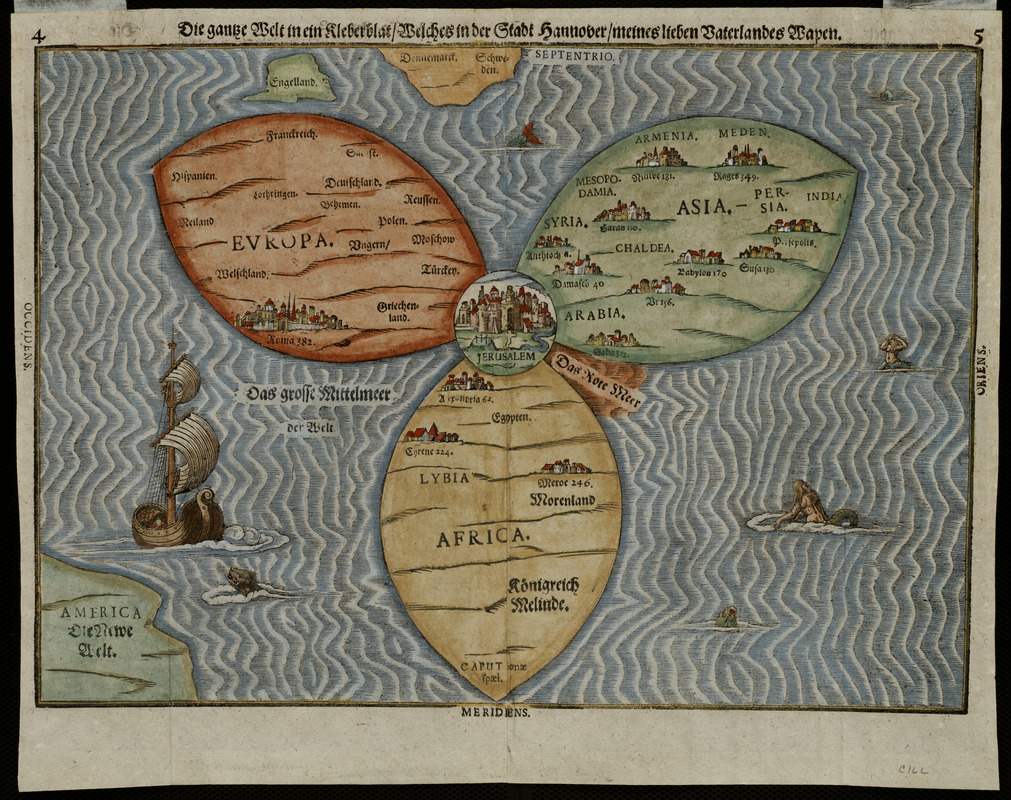 Jerusalem is the center of the World – Title: *breaking the glass: BT Talmud Berachot 30,31 *fruit was lost: Sotah 9, 12 *all the Torah’s commandments are for all of israel to fulfill – Rambam, Igeret HaShmad (Letter on Persecution), Yitzchak Shilat Edition, Volume I, pp. 57-58 *Rambam, Sefer HaMitzvot, Positive Commandments number 20 *Rashi on BT Sukkah 41:a, Ezekiel 43:11 (“so that they keep: They will learn the matters of the measurements from your mouth so that they will know how to do them at the time of the end.”) The sources can also be found at https://www.templeinstitute.org/holy-… |
|
Holy Temple Myth Busters: Part II: Falling from Heaven Published on Feb 6, 2017
The Holy Temple will descend ready-made from heaven. Fact or myth? Rabbi Chaim Richman provides the answers from the sources of Torah wisdom to this question and many more in this multi-part series which will bust all of the myths that have come to clutter Jewish thought concerning the building of the Holy Temple and its significance to the entire world. This video was made possible in part by the Shraga family of the USA, and by the Temple Institute, Inc., a 501 (c) 3 non-profit organization. SOURCES FOR THIS VIDEO: Rambam, Sefer HaMitzvot, Shoresh Shlishi Rambam, 13 Principles of Faith, Introduction to Tractate Sanhedrin Rambam, Igeret HaShmad Deut. 29:28 Rambam, Hilchot Yesodei HaTorah 9,1 Sefer HaIkarim 3:16 Maharal Tiferet Yisrael 51 ‘clearly according to halacha it is a mitzva for Israel to build the Beit HaMikdash, Rambam Hilchot Beit HaBechira 1,1 Aruch L’Ner on Sukkah 41.A, on Rashi ‘Ei Nami’ Rambam, Sefer HaMitzvot 20 Or HaChaim on Shemot 25:8 Sifre BaMidbar, 92 S’Mag, Positive Commandments 163 Sanhedrin 17.b, Shavuot 15.a, Jerusalem Sanhedrin 1,3, Rambam Hilchot Beit HaBechira 6,11 The Mitzvot are for Israel to Fulfill (G-d commands, we fulfill); G-d does not do the commandments: Ramchal Derech Hashem 1:2:2; Makot 23b; Devarim 6:24-25; 30:11; Bereshith Rabbah 44:1; Vayikra Rabbah 13:3; Tanchuma, Shemini 8; Midrash Tehillim 18:25; Yalkut Shimoni 2:121; Rambam Moreh Nevuchim 3:26-27; Avodat HaKodesh, Chelek HaAvodah 3; Shnei Luchot HaBrit, Shaar HaGadol 1:48b; Maharal Tiferet Yisrael 7. Opinions of Rashi/Tosafot: Sukkah 41:a, Rosh Hashana 30:a, Shavuot 15:b source for information about R. Y. ben Chanina B’reishith Rabbah 64 Ezekial 43:11, Rashi says ‘so that they will know to do them’ source for R. Yehiel of Paris…Kaftor Va’Ferach, Rabbi Ashtori HaParchi, Chapter 6 The sources can also be found at https://www.templeinstitute.org/holy-… |
|
Holy Temple Myth Busters: Part III: Mashiach vs the People Published on Mar 23, 2017
We must wait for the messiah to build the Holy Temple. Fact or myth? Quoting directly from Israel’s most illustrious sages, Rabbi Richman explodes myth after myth concerning Moshiach and his role in the building of the Holy Temple. From previous chapters in the Temple Institute’s Holy Temple Myth Busters Series: The Holy Temple will descend ready-made from heaven. Fact or myth? Building the Holy Temple will cause World War III. Fact or myth? Rabbi Chaim Richman provides the answers from the sources of Torah wisdom to these questions and many more in this multi-part series which will bust all of the myths that have come to clutter Jewish thought concerning the building of the Holy Temple and its significance to the entire world. This video was made possible in part by the Shraga family of the USA, and by the Temple Institute, Inc., a 501 (c) 3 non-profit organization. SOURCES FOR THIS VIDEO: Maimonides Mishneh Torah, Hilchot Beit HaBechira 1,1 Maimonides Mishneh Torah, Hilchot Melachim 11,1 Maimonides Mishneh Torah, Hilchot Melachim 12 Pesikta Rabati 36 Maimonides, Sefer Igeret HaShmad The sources can also be found at https://www.templeinstitute.org/holy-… |
|
Holy Temple Myth Busters: Part IV: Korban Pesach: To Be Or Not To Be? Published on Apr 3, 2017 The Passover Offering is a thing of the past. It’s not relevant today. Fact or myth?Quoting directly from Israel’s most illustrious sages, Rabbi Richman explains why it is not only possible to bring the Korban Pesach today, but it is imperative to do so.From previous chapters in the Temple Institute’s Holy Temple Myth Busters Series:We must wait for the messiah to build the Holy Temple. Fact or myth?The Holy Temple will descend ready-made from heaven. Fact or myth?Rabbi Chaim Richman provides the answers from the sources of Torah wisdom to these questions and many more in this multi-part series which will bust all of the myths that have come to clutter Jewish thought concerning the building of the Holy Temple and its significance to the entire world.This video was made possible in part by the Shraga family of the USA, and by the Temple Institute, Inc., a 501 (c) 3 non-profit organization.SOURCES FOR THIS VIDEO:Exodus Chapter 12Numbers 9:13Kritot 22:bRambam Hilchot Teshuva 8, 1Rambam Hilchot Biyat HaMikdash, Chapter 4, 7Chasam Sofer Responsa, Yoreh Deah #236R. Ashtori HaParchi, Kaftor V’Ferach, Chapter 6Ya’avetz Responsa, Section I, #99Maharatz Chajes, Kuntrus Acharon, Avodat HaMikdash 76Rambam Hilchot Beit HaBechira Chapter 6, 15Rambam end of Hilchot Klei HaMikdash, Maharatz Chajes Kuntrus Acharon Chapter 2HaRav Tzvi Hersch Kalisher, Drishat Tzion, Additions to Ma’amar Kadishin, Ma’alat Eretz Noshavat 5, Neilat Sha’arimRambam Hilchot Beit HaBechira Chapter 7, 23HaRav Yitzchak Itinga, Respona Mahari, Sec. I, Orach Chaim 88The sources can also be found at https://www.templeinstitute.org/holy-temple-myth-busters-sources.htm These sheep are in Jerusalem outside our window |
|
|
|
|
Rabbi Sacks http://www.ttidbits.com/1225/1225whole.pdf
Why Civilisations DieIn her recent “The Watchman’s Rattle”, subtitled ‘Thinking our way out of extinction’, Rebecca Costa delivers a fascinating account of how civilisations die. Their problems become too complex. Societies reach what she calls a cognitive threshold. They simply can’t chart a path from the present to the future. The example she gives is the Mayans. For a period of three and a half thousand years, between 2600BCE and 900CE, they developed an extraordinary civilisation, spreading over what is today Mexico, Guatemala, Honduras, El Salvador and Belize with an estimated population of 15 million people. Not only were they master potters, weavers, architects and farmers. They developed an intricate cylindrical calendar system, with celestial charts to track the movements of the stars and predict weather patterns. They had their own unique form of writing as well as an advanced mathematical system. Most impressively they developed a water-supply infrastructure involving a complex network of reservoirs, canals, dams and levees. Then suddenly, for reasons we still don’t fully understand, the entire system collapsed. Sometime between the middle of the eighth and ninth century the majority of the Mayan people simply disappeared. There have been many theories as to why it happened. It may have been a prolonged drought, overpopulation, internecine wars, a devastating epidemic, food shortages, or a combination of these and other factors. One way or another, having survived for 35 centuries, Mayan civilisation failed and became extinct. Rebecca Costa’s argument is that whatever the causes, the Mayan collapse, like the fall of the Roman Empire, and the Khmer Empire of thirteenth century Cambodia, occurred because problems became too many and complicated for the people of that time and place to solve. There was cognitive overload, and systems broke down. It can happen to any civilisation. It may, she says, be happening to ours. The first sign of breakdown is gridlock. Instead of dealing with what everyone can see are major problems, people continue as usual and simply pass their problems on to the next generation. The second sign is a retreat into irrationality. Since people can no longer cope with the facts, they take refuge in religious consolations. The Mayans took to offering sacrifices. Archeologists have uncovered gruesome evidence of human sacrifice on a vast scale. It seems that, unable to solve their problems rationally, the Mayans focused on placating the gods by manically making offerings to them. So apparently did the Khmer. Which makes the case of Jews and Judaism fascinating. They faced two centuries of crisis under Roman rule between Pompey’s conquest in 63 BCE and the collapse of the Bar Kochba rebellion in 135 CE. They were hopelessly factionalised. Long before the Great Rebellion against Rome and the destruction of the Second Temple, Jews were expecting some major cataclysm. Another was Torah study. The sages interpreted Malachi’s words (1:11), “In every place offerings are presented to My name”, to refer to scholars who study the laws of sacrifice. (Menachot 100a). “One who recites the order of sacrifices is as if he had brought them” (Taanit 27b). Yet another was T’shuva. The Psalm (51:19) says “the sacrifices of God are a contrite spirit.” From this the sages inferred that “if a person repents it is accounted to him as if he had gone up to Jerusalem and built the Temple and the altar and offered on it all the sacrifices ordained in the Torah” (Vayikra Rabba 7:2). What is striking in hindsight is how, rather than clinging obsessively to the past, sages like Rabban Yochanan ben Zakkai thought forward to a worstcase-scenario future. The great question raised by Tzav, which is all about different kinds of sacrifice, is not “Why were sacrifices commanded in the first place?” but rather, given how central they were to the religious life of Israel in Temple times, how did Judaism survive without them? Jews did not abandon the past. We still refer constantly to the sacrifices in our prayers. But they did not cling to the past. Nor did they take refuge in irrationality. They thought through the future and created institutions like the synagogue and house of study and school that could be built anywhere and sustain Jewish identity even in the most adverse conditions. That is no small achievement. The world’s greatest civilisations have all, in time, become extinct while Judaism has always survived. In one sense that was surely Divine Providence. But in another it was the foresight of people like Rabban Yochanan ben Zakkai who resisted cognitive breakdown, created solutions today for the problems of tomorrow, who did not seek refuge in the irrational, and who quietly built the Jewish future. Surely there is a lesson here for the Jewish people today: Plan generations ahead. Think at least 25 years into the future. Contemplate worst-case scenarios. Ask what we would do, if… What saved the Jewish people was their ability, despite their deep and abiding faith, never to let go of rational thought, and despite their loyalty to the past, to keep planning for the future. |
|
JerusalemCats Comment: On the other hand you have this:
This is a very short clip of a much longer video from the The Ruderman Family Foundation on facebook.
|
|
| From Esser Agaroth: Rashi suggests the possibility that only 20% of Israel left Egypt, at the time of our great exodus from there. How so? וַיַּסֵּב אֱלֹהִים אֶת-הָעָם דֶּרֶךְ הַמִּדְבָּר, יַם-סוּף; וַחֲמֻשִׁים עָלוּ בְנֵי-יִשְׂרָאֵל, מֵאֶרֶץ מִצְרָיִם. (שמות יג,יח)
On the word hamushim, he offers an alternative translation to “armed.”
Several sources, such as the Kol HaTor, suggest parallels between our exodus from exile in Egypt and how we will complete our exodus from the current exile of Edom, including the possibility that only four fifths of us will make it out this time as well. Who knows? There might even be three days of darkness. However, this time final time around, will these days of darkness necessarily be physical? Instead, they could be spiritual, and unfortunately, the may have already begun for European [or American] Jewry. May our recalling of the exodus from Egyptian exile this Pesach (Passover) inspire those Jews still entrenched in Europe, to complete their own Exodus. JerusalemCats Comment: Something to think about: What percentage of Jews made it out of Spain in 1492. 10%? What percentage of Jews made it out of Europe in 1939 before the Holocaust. 10%?
|
|
Caroline Glick The American Jewish Community’s Moment to Choose |
|
| As for the risks living in Israel with Hamas, Fatah (PA) and the other crazies;To quote General George S. Patton
“The object of war is not to die for your country but to make the other bastard die for his. “ “You (the Arabs) have a choice, The peace of prosperity or the peace of unburied death. The choice is yours”
Just look at all the attacks to the Jewish Community in the US!Come home to Israel while you still can. Nefesh B’Nefesh: Live the Dream US & CAN 1-866-4-ALIYAH | UK 020-8150-6690 or 0800-085-2105 | Israel 02-659-5800 https://www.nbn.org.il/ info@nbn.org.il It’s time to come home! Nefesh B’Nefesh: Live the Dream 1-866-4-ALIYAH UK 0800 075 7200 Come home to the Land of Emuna |
|
Mistakes That Destroy The Marriage (A Must Watch Lecture) |
|
-
Today18/04/2024 – י׳ בניסן ה׳תשפ״ד
-
Please note that this website uses cookies. Continued browsing of the site constitutes consent to this use.
For more information, see the Privacy Policy.לידיעתך, באתר זה נעשה שימוש בקבצי Cookies. המשך גלישה באתר מהווה הסכמה לשימוש זה.
למידע נוסף ניתן לעיין במדיניות הפרטיותWe recommend you turn off your Ad Blocker.
WE DO NOT ADVERTISE ON THIS SITE.
We do run widgets on the side panel.Jewish Agency Toll Free Phone Numbers

Nefesh B’Nefesh: Live the Dream US & CAN 1-866-4-ALIYAH | UK 020-8150-6690 or 0800-085-2105 | Israel 02-659-5800 https://www.nbn.org.il/ info@nbn.org.il
Nefesh B’Nefesh: Live the Dream
US & CAN 1-866-4-ALIYAH | UK 0800 075 7200 | Israel 02-659-5800 www.nbn.org.il
Grocery Shopping in Israel
English, Hebrew transliterated guide with Meat Chart and Oven Temperatures °F to °C
OCTOBER 7TH POSTS
- 7October
- Am Ysroel Chai עם ישראל חי
- ISRAEL AT WAR 5784: 1 sheep and 70 wolves
- Propaganda vs Reality
- UN, UNRWA and Terror
- You vowed ‘Never Again’
- Prayer for the People of Israel During War
- WAR: Hamas missiles on Jerusalem on Shabbat/Shemini Atzeret 5784
- Never Forget, Never Forgive
- Sanctions
- 100th anniversary of the San Remo Conference
CORONAVIRUS POSTS
- Truth or Consequences Covid-19: The Truth
- They Suffered Myocarditis After COVID-19 Vaccination. Years Later, Some Still Haven’t Recovered
- Watchdog: COVID-19 Vaccines Revealed as ‘Neither Safe, Nor Effective’
- Israeli MOH is hiding a study showing a 2-4 times higher rate of adverse events reports following Pfizer COVID vaccine in kids aged 5-11 vs ages 12-17
- Pfizer-Funded Study Shows Poor Effectiveness for COVID-19 Vaccine in Young Children
- Truth or Consequences Covid-19: More Consequences
- Truth or Consequences Covid-19: The Consequences
- Truth or Consequences Covid-19: More Truth
- Truth or Consequences Covid-19: Save the Children
- Truth or Consequences Covid-19: The Grim Reaper Edition
- Truth or Consequences Covid-19
- Coronavirus COVID-19 Vaccine: Bill Gates “Another Final Solution”
- Coronavirus COVID-19 in the US
- Coronavirus COVID-19 in Israel
- Be Prepared and Stay Healthy
- Wuhan Coronavirus COVID-19 in China
- Bill Gates and the Rockefeller Foundation “Another Final Solution”
GLOBALISM POSTS and Ukraine Posts
- Colour Revolution in Israel
- BRICS
- Buy Locally
- Winter is coming
- Military biological activities of the United States in Ukraine
- News Ukraine Adar 5782
- klopse western
- The Weather report 1 Adar II-5782
- The prophecies are true
- Russia’s Military Operation
- Donbass: Azov Nazi Ukraine Terror
- UKRAINE: DONBASS. YESTERDAY, TODAY, AND TOMORROW
- BURNT ALIVE IN ODESSA. Documentary | 2May2014 Odessa, Ukraine firebombed by Nationalist
- The Dreizin Report – 2022-05-17 – The Fall of the Azov
- Fast Forward to Fascism [Ukraine today]
- Here’s what the Azov Battalion tattoos are hiding
- Interview with a Stormtrooper
- The Azov Battalion: Laboratory of Nazism
“BDS is an anti-Semitic campaign led by supporters of terror with one purpose: the elimination of the Jewish state.” Download the report MSA-report-Behind-the-Mask
Help support a needy Tzadik
Help support Jerusalem Cats

Ministry Of Strategic Affairs Report On “Terrorists In Suits” https://4il.org.il Click to Download the Report.
Click to Enlarge
Uncensored News from Israel and the World
Why Do All These Rabbis Warn Against Getting the Covid-19 Vaccine?
PRAYER TO BE SAVED FROM CORONAVIRUS
Master of Universe, who can do anything!
Cure me and the whole world of the Coronavirus, because redemption is near.
And through this reveal to us the 50th gate of holiness, the secret of the ibbur, and may we begin from this day onward to be strong in keeping interpersonal commandments (i.e. being kind to others).
And by virtue of this may we witness miracles and wonders the likes of which haven’t been since the creation of the world. And may there be sweetening of judgments for the entire world, to all mankind, men women and children.
Please God! Please cure Coronavirus all over the world, as it says about Miriam the prophetess, “Lord, please, cure her, please.”
Please God! Who can do anything! Send a complete healing to the entire world! To all men, women, children, boys and girls, to all humanity wherever they may be, and to all the animals, birds, and creatures. All should be cured from this disease in the blink of an eye, and no trace of the disease should remain.
And all will merit fear of Heaven and fear of God, O Merciful and Compassionate Father.
Please God, please do with us miracles and wonders as you did with our forefathers by the exodus from Egypt. And now, take us and the entire world out from this disease, release us and save us from the Coronavirus that wants to eliminate all mortals.
We now regret all the sins that we did, and we honestly ask for forgiveness. And in the merit of our repentance, this cursed disease, that does not miss men, women, boys, girls, and animals, will be eliminated.
Please God, as quick as the illness came it will go away and disappear immediately, in the blink of an eye, and by this the soul of Messiah Ben David will be revealed.
Please God, grant us the merit to be included in the level of the saints and pure ones, and bless anew all the fruit and vegetation, that all will be healed in the blink of an eye, and we will see Messiah Ben David face to face.
Please God, who acts with greatness beyond comprehension, and does wonders without number. Please now perform also with us miracles and wonders beyond comprehension and let no trace of this cursed disease remain. And may the entire world be cured in the blink of an eye.
Because Hashem did all this in order for us to repent, it is all in order for us to direct our hearts to our Father in Heaven, and by that He will send blessings and success to all of our handiwork.
Important Posts
-
Bill Gates and the Rockefeller Foundation: Vaccine News
-
After Monsey, and New York – Kristallnacht!
- How to help YOUR Relatives Escape from New York
-
A Portrait of Jewish Americans
-
The Jewish People Policy Institute-Raising Jewish Children 2017
- Jonathan Pollard
- We have no other country – אין לנו ארץ אחרת
- You are a Princess
- Modesty for Women – Wig Vs Scarf
-
BDS Know the Facts
- CAMERA: Quantifying the Israeli-Palestinian Conflict’s Importance to Middle East Turmoil
- Warnings to American Jews
- A response to the EU Boycott of Yesha Israel
- Israel is not America
- A School is connected to a Congregation or a Rabbi, Who are they?
- Another reason to use a good Kosher certification hecksher
- Health Risks of Genetically Modified Food or The benefits of keeping Kosher
- What’s in Your Milk? 20+ Painkillers, Antibiotics, and More
- Cholov Yisroel: Does a Neshama Good
- Cell Phones:The Day Einstein Feared Has Arrived
- Death in Advertising – Coke and Cigarettes
- College life in America
- 1 sheep and 70 wolves-Hanukah Geography
- A Heart to Heart talk about Christian missionaries and Jewish Assimilation
- Anatomy of a smear
- Remembering the hard times predating the startup nation
-
Israel: The World’s First Modern Indigenous State
- Rosh Hashanah Foods
- How to assemble an Israeli Succah
-
Hanukkah Posts and Recipes
- 1 January is Sylvester Day יום סילבסטר
- Tu B’Shevat-How and What to check for Bugs
- How to Celebrate Purim
- Purim for Cats: Purim behind the Scenes
- The Day After Purim-How to Prepare for Pesach
- Pesach Tips and Schedule
- Preparing for Pesach
- Sell your Chametz online:
- Pesach Wonder Pot סיר פלא Recipes
- Pesach and Beyond פסח ומעבר
- La Haggada De L’idee Juive
- Counting The Omer ספירת העומר
- Shlissel or Key Challah
- YOM HASHOAH יום שואה
- Yom Hazikaron : יום זיכרון We Remember and Honor our fallen
- Yom HaAtzma’ut- יום העצמאות
-
Shavot Wonder Pot סיר פלא Recipe-Cheesecake
- Tisha B’Av 2013 תשעה באב תשע”ג
- Tisha B’AV Love your fellow Jew

הסערה הבאה שרת התרבות מירי רגב הורתה להכניס ללוגו הרשמי של חגיגות היובל לאיחוד ירושלים את המילה שחרור ירושלים במקום איחוד העיר
נשלח על ידי
איתמר אייכנר
אחרי
Jewish Agency Toll Free Phone Numbers
Nefesh B’Nefesh: Live the Dream
US & CAN 1-866-4-ALIYAH | UK 0800 075 7200 | Israel 02-659-5800 www. nbn.org.il
Alyah : mode d’emploi http://www.jewishagency.org/fr/aliyah/program/7618
Choisissez celle qui vous correspond et inscrivez-vous sur notre site Internet en cliquant ICI ou par téléphone, en appelant le Global Center au 0800 916 647
The Jewish Agency Global Service Center http://www.jewishagency.org/global_centerUS 1-866-835-0430 | UK 0-800-404-8984 | Canada 1-866-421-8912
The Jewish Agency Global Service Center
Point of No Return: Jewish Refugees from Arab Countries
From the 1940s until the 1970s, and heightening with the founding of Israel in 1948, nearly million Jews were expelled from their homes across Arab countries such as Iraq, Syria, Lebanon, Egypt, Yemen, Libya, Algeria and Iran.
Jews were frequently subjected to pogroms, systemic violence and religious persecution. Their exiles were largely attributable to Arab regimes increasing their hostility toward Jews because of the very existence of Israel.
Today, while stories abound of many Arab refugees, few are aware or even acknowledge this forgotten exodus of Jewish refugees. Only in Israel has Nov. 30, the day after the UN voted to approve the Jewish-Arab partition plan of Palestine, been marked to commemorate their plight.
Inspirational Breslev teachings in emunah, bitachon and hitbodedut- today!
Breslov Shiurim Podcasts
Subscribe to Podcasts on RSS, iTunes or Poddirectory

Podcasting Help Five Best Podcast ManagersRav Nasan Maimon | Breslov Torah | Free Listening on SoundCloudRabbiisrael on Sound Cloud

The Canary Mission database was created to expose individuals and groups that are anti-Freedom, anti-American and anti-Semitic in order to protect the public and our democratic values.
1948 Jewish 5 Palestine Pounds Note
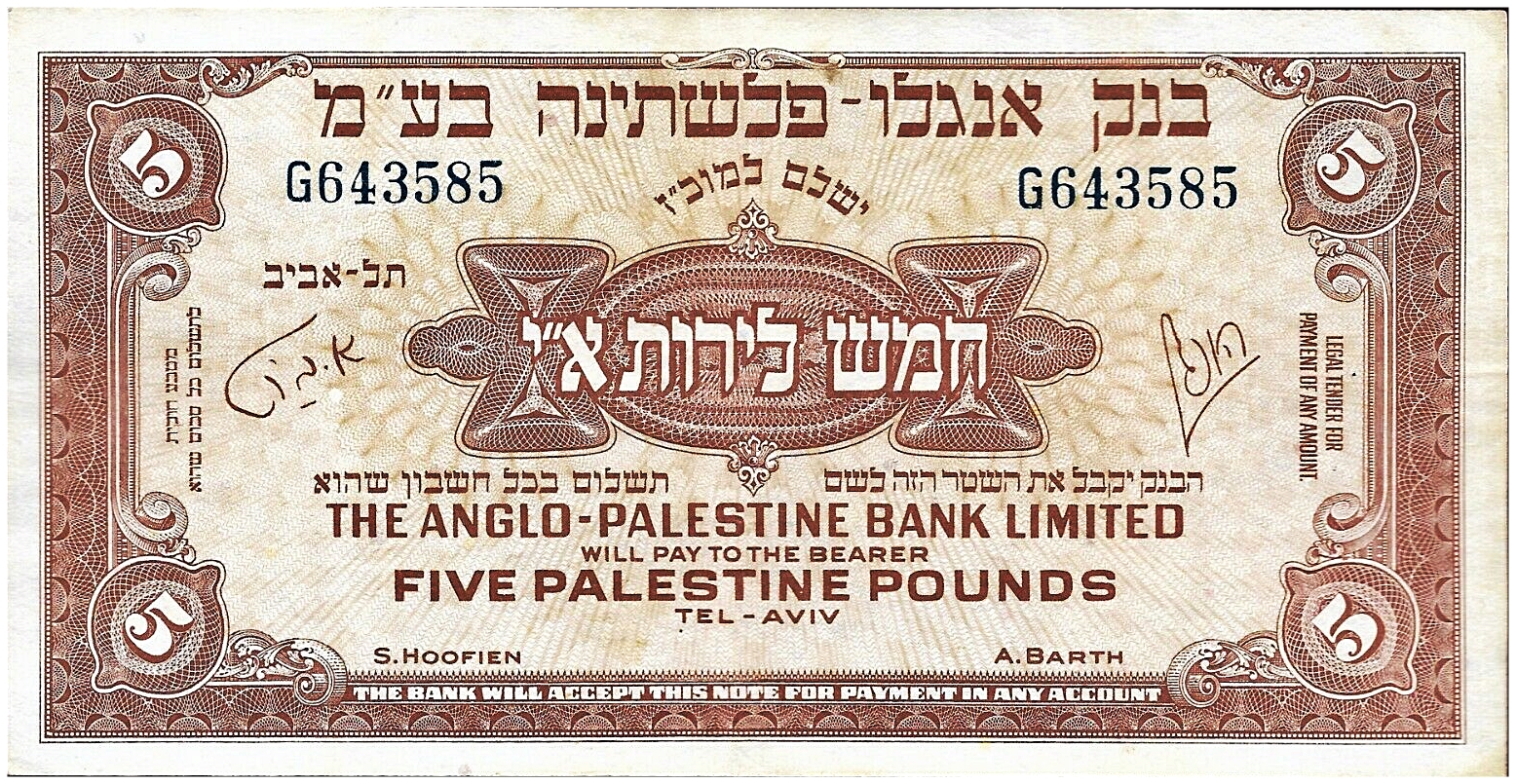
Issuer Israel
Issuing bank Anglo-Palestine Bank Limited
Period State of Israel (1948-date)
Type Standard banknote
Years 1948-1952
Value 5 Palestine Pounds
Currency Palestine Pound (1948-1949)
Composition Paper
Size 105 × 68 mm
Shape Rectangular
Demonetized 23 June 1952
Number N# 207999
References P# 16 April 2024 S M T W T F S 1 2 3 4 5 6 7 8 9 10 11 12 13 14 15 16 17 18 19 20 21 22 23 24 25 26 27 28 29 30 -
An important piece of evidence: The British Palestine Exploration Fund survey map – 1871-1877 – The PEF people delineated every wadi, every settlement, tree, and home. They crisscrossed the territory, and an examination of the map shows how empty and barren the land was, and how few people lived there.
“The Palestinian people does not exist. The creation of a Palestinian state is only a means for continuing our struggle against the state of Israel for our Arab unity… Only for political and tactical reasons do we speak today about the existence of a Palestinian people… to oppose Zionism.” Zuheir Muhsein, the late Military Department head of the PLO and member of its Executive Council.; March 1977, Dutch daily Trouw
London cab driver’s answer to a request from a Muslim to turn off the radio. (You just got to love the Brits.)
A devout Arab Muslim entered a black cab in London .
He curtly asked the cabbie to turn off the radio because as decreed by his religious teaching, he must not listen to music because in the time of the prophet there was no music, especially Western music which is the music of the infidel.
The cab driver politely switched off the radio, stopped the cab and opened the door.
The Arab Muslim asked him, “What are you doing?”
The cabbie answered, “In the time of the prophet there were no taxis, so get out and wait for a camel.”I wonder how many years (hundreds for sure) Jewish people have lived in Quebec. I don’t believe that they have ever demanded that pork be removed from the school’s menu where their children attend…
Excellent reply by the Mayor of Dorval, Quebec, to the demands of the Muslim population in his community.
Put some pork on your fork.
Too bad the USA doesn’t have the common sense to publish this nationwide, even if they have a muslim in the white house. Should also be posted on signs all along U.S. borders.Let’s hear it for a Quebec mayor.
MAYOR REFUSES TO REMOVE PORK FROM SCHOOL CANTEEN MENU. EXPLAINS WHY
Muslim parents demanded the abolition of pork in all the school canteens of a Montreal suburb. The mayor of the Montreal suburb of Dorval, has refused, and the town clerk sent a note to all parents to explain why..
“Muslims must understand that they have to adapt to Canada and Quebec, its customs, its traditions, its way of life, because that’s where they chose to immigrate.
“They must understand that they have to integrate and learn to live in Quebec .
“They must understand that it is for them to change their lifestyle, not the Canadians who so generously welcomed them.
“They must understand that Canadians are neither racist nor xenophobic, they accepted many immigrants before Muslims (whereas the reverse is not true, in that Muslim states do not accept non-Muslim immigrants).
“That no more than other nations, Canadians are not willing to give up their identity, their culture.
“And if Canada is a land of welcome, it’s not the Mayor of Dorval who welcomes foreigners, but the Canadian-Quebecois people as a whole.
“Finally, they must understand that in Canada ( Quebec ) with its Judeo-Christian roots, Christmas trees, churches and religious festivals, religion must remain in the private domain. The municipality of Dorval was right to refuse any concessions to Islam and Sharia.
“For Muslims who disagree with secularism and do not feel comfortable in Canada, there are 57 beautiful Muslim countries in the world, most of them under-populated and ready to receive them with open halal arms in accordance with Shariah.
“If you left your country for Canada, and not for other Muslim countries, it is because you have considered that life is better in Canada than elsewhere.
“Ask yourself the question, just once, “Why is it better here in Canada than where you come from?”
“A canteen with pork is part of the answer.”
If you feel the same forward it on.
This reminds me of a Morty Dolinsky story from the time he was head of the Government Press Office:
When the late Morty Dolinsky was in charge of the Government Press Office in the 1980s, he once famously replied to a reporter, who asked for information about the West Bank, that he knew no West Bank as he banked at Leumi. -
Archives
-
Pages
- About the Artist, Cookbook & Novels
- Aliyah Tips
- Aliyah, Health & News
- 100 Years After Balfour Declaration, The Arabs Have Failed Where Israel Has Excelled
- Aliyah Outer Limits Archive
- Aliyah Outer Limits News
- CAMERA – BACKGROUNDER: The Intrinsic Antisemitism of BDS
- CAMERA: Quantifying the Israeli-Palestinian Conflict’s Importance to Middle East Turmoil
- Jonathan Pollard
- Mr. Happy Good News
- Mr. Happy’s Aliyah Outer Limits
- Mr. Happy’s Banned Health News
- Mr. Happy’s GMO – Genetically Modified Food News
- Mr. Happy’s Health News
- Mr. Happy’s Nuclear News
- Mr. Happy’s Past Weekly Column
- Mr. Happy’s Weekly Column
- Mr. Happy’s Wellness Page
- Mr. Happy’s World News
- Not in the News
- Other News
- Astrology, Gematria & Recipes
- Breslov
- Cat Quintet and Cat Videos
- Cat Quintet: Aurora – The Andrews Sisters
- Cat Quintet: Beach Boys
- Cat Quintet: Bei Mir Bist Du Schon – The Andrews Sisters
- Cat Quintet: Besame Mucho – Xavier Cugat and His Orchestra
- Cat Quintet: Best Meditation Music – Oliver Shanti
- Cat Quintet: Let’s Call The Whole Thing Off
- Cat Quintet: Steppenwolf – Magic Carpet ride
- Cutest Cat Moments Videos
- Debbie’s Worm
- For a-sweet boy, I will always remember
- Sons of the Pioneers – What this Country Needs
- Sons Of The Pioneers: Dixie
- You Are My Sunshine
-
Ephemeris

Sun in Aries
Moon in Leo
28 degrees
Waxing Gibbous Moon
9 days old -
Spam Blocked


